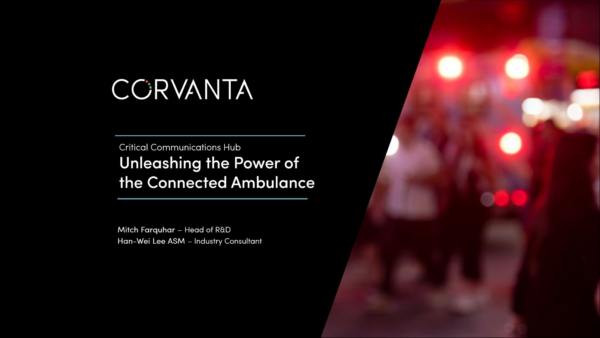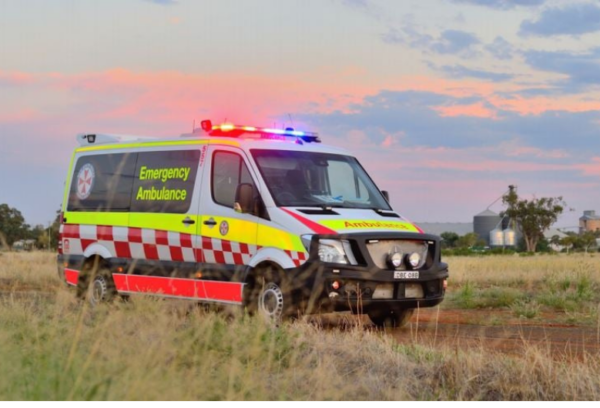First responders often work under high-pressure and demanding conditions, which can lead to fatigue. Fatigue significantly impacts safety and the quality of care provided to patients. To mitigate this risk, the integration of AI fatigue detection systems into our Critical Comms Hub has emerged as a valuable solution.
Our head of R&D, Mitch Farquhar, delves into five ways fatigue detection can enhance the safety of first responders.


Mitch Farquhar
R&D Manager
Mitch has more than 20 years of experience building software solutions. He has led teams through all phases of the software development life cycle, including prototyping, patenting, commercialisation, implementation, and maintenance. Mitch plays a key role in defining Corvanta’s strategy for the provision of next generation pre-hospital care technology to our customers.
Five ways fatigue detection enhances first responder safety
Early Detection and Prevention: Fatigue can impair cognitive function, reaction times, and decision-making abilities, potentially leading to critical errors. AI-based fatigue detection systems employ advanced algorithms and sensors to analyse vital signs, eye movement, facial expressions, and other physiological indicators of fatigue. By continuously monitoring these metrics in real-time, the system can detect early signs of fatigue and alert first responders. This early detection enables proactive measures to be taken, such as rest breaks or task redistribution, preventing accidents and promoting the overall well-being of ambulance crews.
Improved Situational Awareness: Ambulance crews often work long shifts, responding to emergencies at all hours of the day. Fatigue can diminish situational awareness, making it challenging to accurately assess the environment and make sound judgments. AI fatigue detection systems serve as an extra set of “eyes” that monitor the alertness levels of first responders. By providing real-time feedback and warnings, these systems help maintain the awareness required to navigate traffic, identify potential hazards, and make critical decisions swiftly and effectively.
Enhanced Driver Safety: Safe driving is paramount for ambulance crews, as they navigate through unpredictable traffic conditions and often need to reach their destination urgently. Fatigue detection systems can be integrated into the vehicle’s driver monitoring systems, continuously monitoring the driver’s alertness and detecting signs of drowsiness or distraction. In the event of potential fatigue, the system can issue audio or visual alerts to the driver, promoting immediate action and reducing the risk of accidents caused by fatigue-related impairment.
Personalised Fatigue Management: AI fatigue detection systems can be tailored to individual first responders, considering their unique physiological characteristics and sleep patterns. By collecting and analysing data over time, the system can create personalised fatigue profiles, allowing for targeted interventions and adjustments to work schedules. This personalised approach to fatigue management ensures that the well-being of each first responder is prioritised, optimising their performance and minimising the risk of fatigue-related incidents.
Data-Driven Insights and Optimisation: AI fatigue detection systems generate valuable data on the fatigue patterns of first responders and their impact on performance. This data can be analysed to identify trends, peak fatigue periods, or factors contributing to fatigue. With these insights, ambulance services can implement evidence-based policies and strategies to optimise shift schedules, provide adequate rest periods, and offer support programs for fatigue management. This data-driven approach helps create a culture of safety and well-being within the ambulance service, ultimately benefiting both first responders and the patients they serve.
AI fatigue detection systems in ambulances play a crucial role in safeguarding the safety and well-being of first responders. By enabling early detection and prevention of fatigue, enhancing situational awareness, promoting safe driving practices, and providing personalised fatigue management, these systems contribute to a safer and more efficient emergency response. The integration of AI technology in your critical comms hub is a powerful tool in supporting the tireless efforts of first responders and ensuring optimal care for patients in critical situations.
READ MORE
CRITICAL COMMS HUB SERIES

Critical Comms Hub Series: Enhancing First Responder Safety through AI Fatigue Detection
First responders often work under high-pressure and demanding conditions, which can lead to fatigue. Fatigue significantly impacts safety and the

Critical Comms Hub Series: When Your Communications Can’t Be Compromised
Reliable and uninterrupted communication is paramount for ambulance service providers. They require robust connectivity to ensure effective communication, seamless mapping

Critical Comms Hub Series: Unleashing the Power of the Connected Ambulance
Comms Hubs? MDTs? Apps? What’s the difference? Join Corvanta’s Head of Research & Development, Mitch Farquhar, and Industry Consultant Han-Wei

Critical Comms Hub Series: Harnessing V2X Technology in Ambulance Services
Lights and sirens are no longer the only way to alert traffic to an approaching ambulance. Vehicle-to-everything (V2X) communication allows



